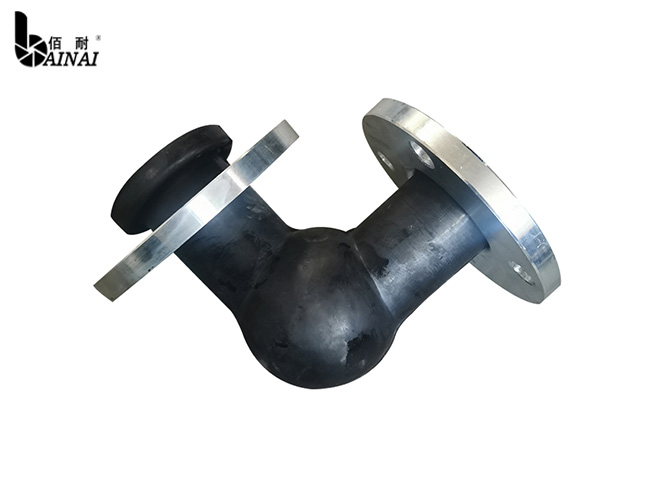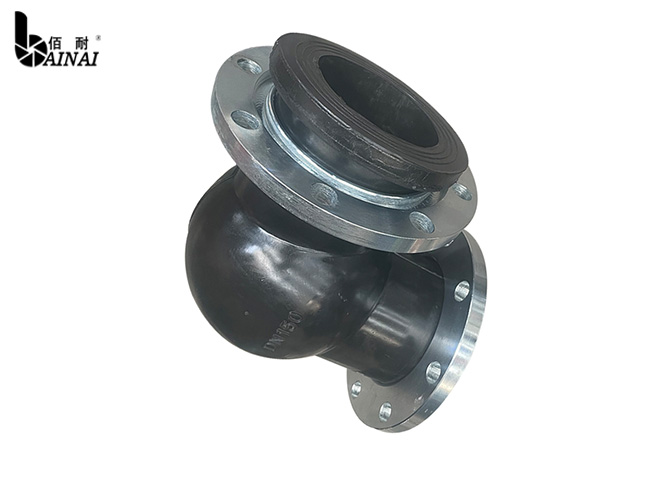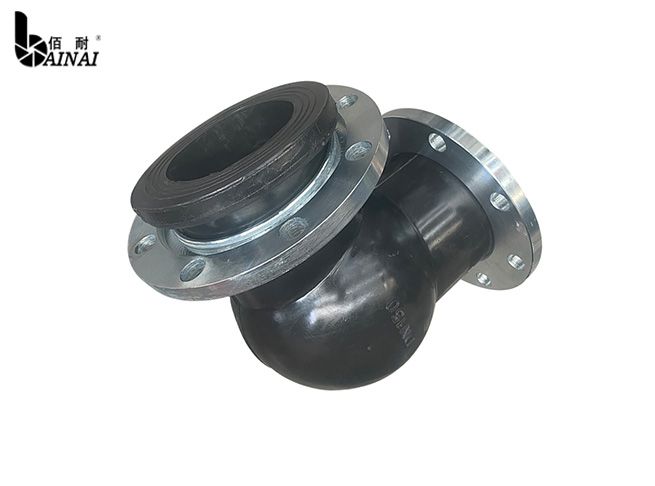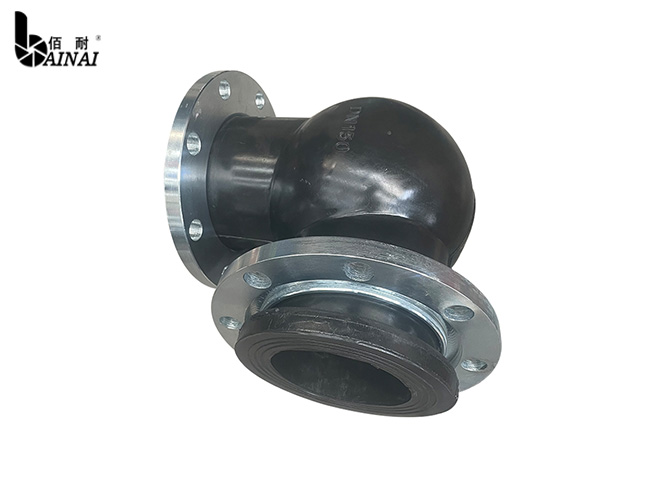



90-degree rubber elbow is a flexible connector used in piping systems to change the direction of fluid flow by 90 degrees. It is commonly used in various industries due to its ability to absorb vibrations and accommodate movement, making it suitable for dynamic applications.
| Nominal diameter |
Length (mm) |
Axial displacement | Radial displacement (mm) |
Deflection angle (a1+a2) |
||
| mm | Inch | Compression (mm) |
Extension (mm) |
|||
| 50 | 2 | 140 | 20 | 20 | 16 | 20° |
| 65 | 2½ | 140 | 20 | 20 | 16 | 20° |
| 80 | 3 | 150 | 20 | 20 | 16 | 20° |
| 100 | 4 | 160 | 20 | 20 | 16 | 20° |
| 125 | 5 | 180 | 20 | 20 | 16 | 20° |
| 150 | 6 | 210 | 20 | 20 | 16 | 20° |
| 200 | 8 | 230 | 20 | 20 | 16 | 20° |
1.Flexibility: The rubber material allows for significant bending and flexibility, making it ideal for installations where space is limited or where pipes need to navigate around obstacles.
2.Vibration Absorption: The elastomeric properties of rubber help dampen vibrations and reduce noise within the piping system.
3.Durability: Made from high-quality rubber compounds, 90-degree elbows are resistant to wear, aging, and a range of chemicals, ensuring a long service life.
4.Easy Installation: These elbows are lightweight and can be easily installed without the need for special tools or fittings.
90-degree rubber elbows are widely used in various applications, including:
Water Supply and Drainage: Commonly found in residential and industrial plumbing systems to direct water flow.
HVAC Systems: Used in air ducting and ventilation systems to change airflow direction.
Industrial Processes: Employed in chemical processing and manufacturing systems to route fluids through equipment efficiently.
Marine Applications: Often used in boats and ships for fluid transport, as they provide flexibility and resistance to environmental factors.
These elbows are essential for maintaining the integrity and efficiency of piping systems by providing smooth transitions and minimizing stress on connected components.